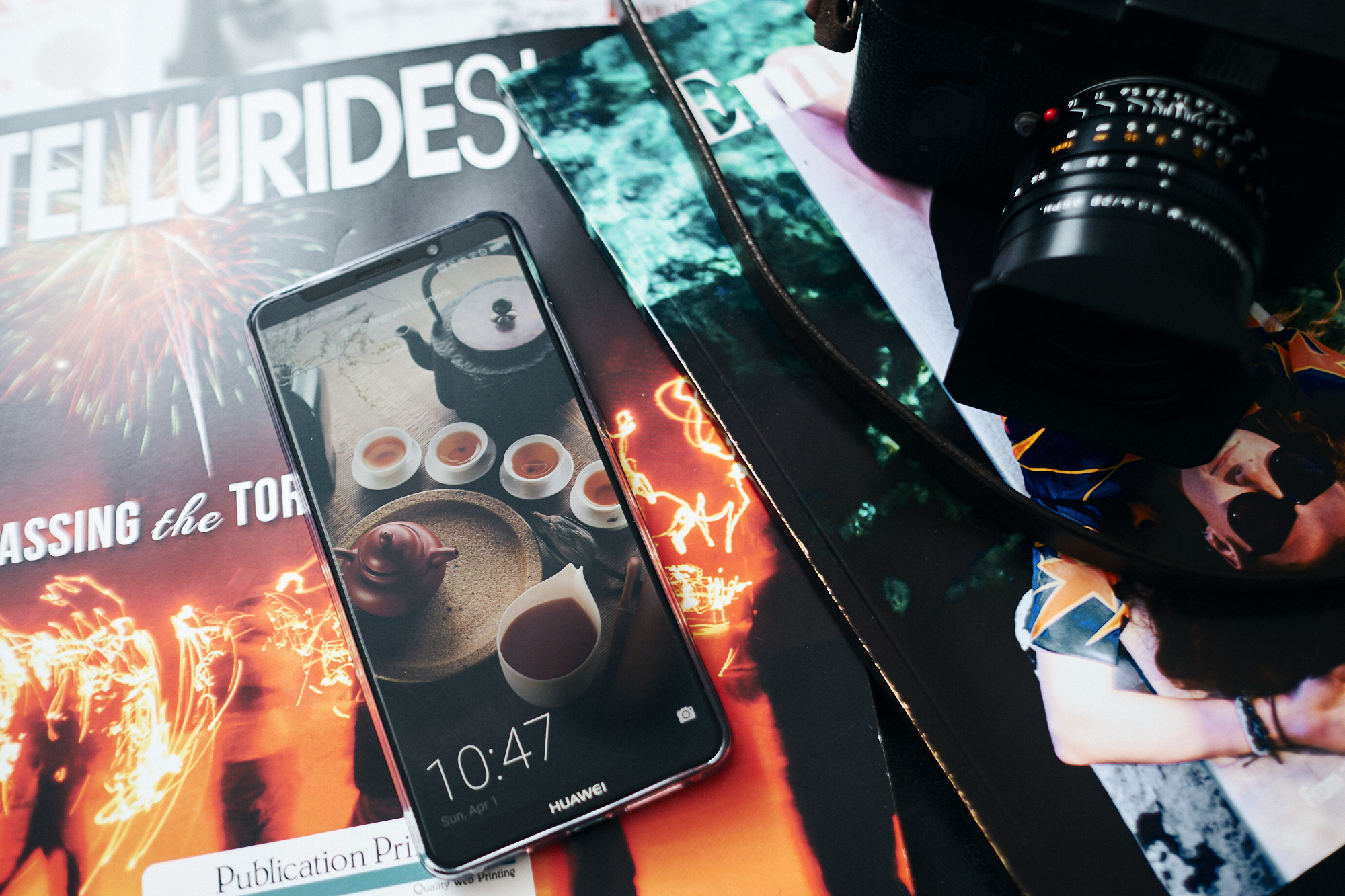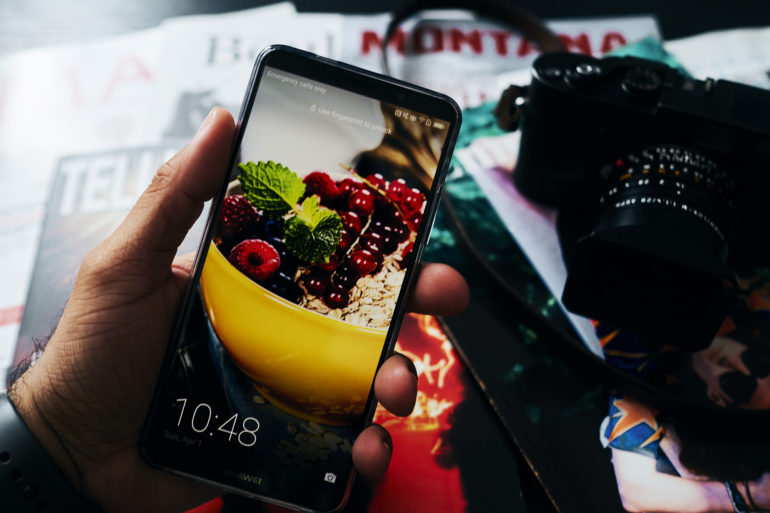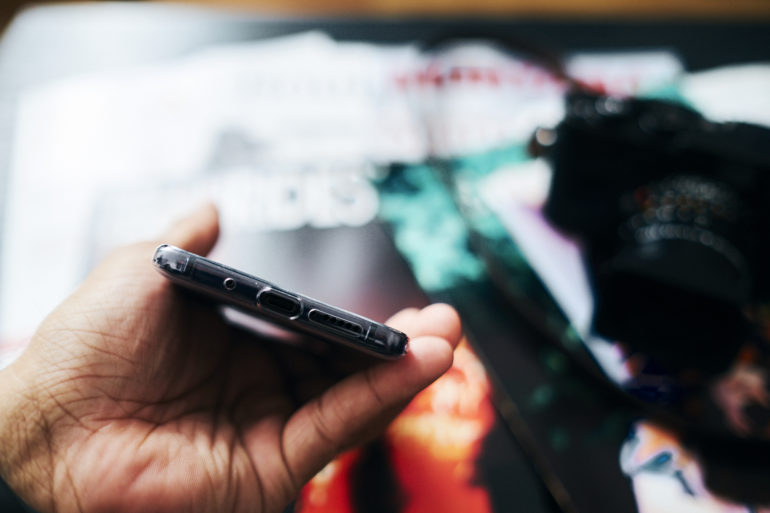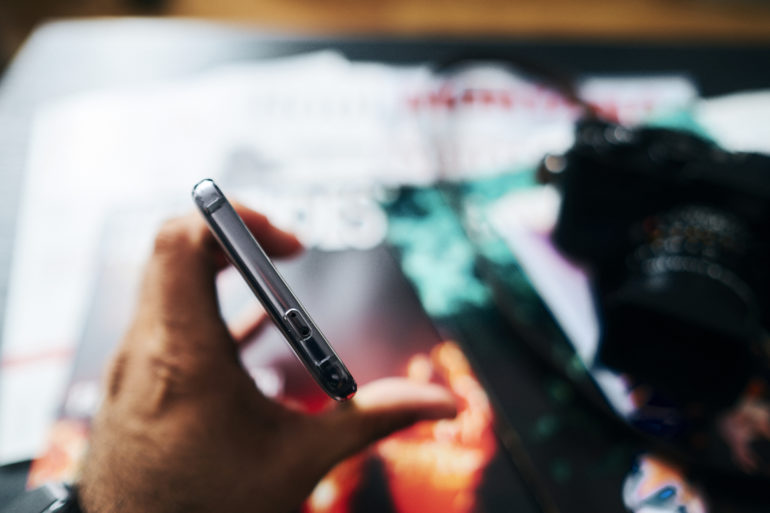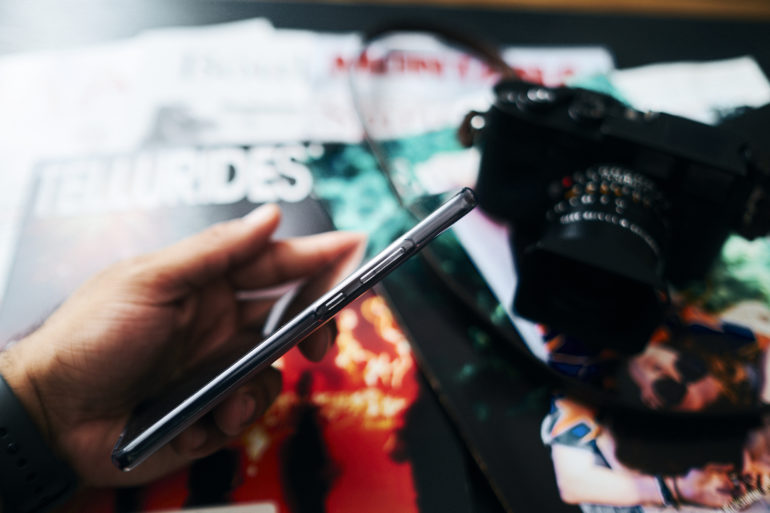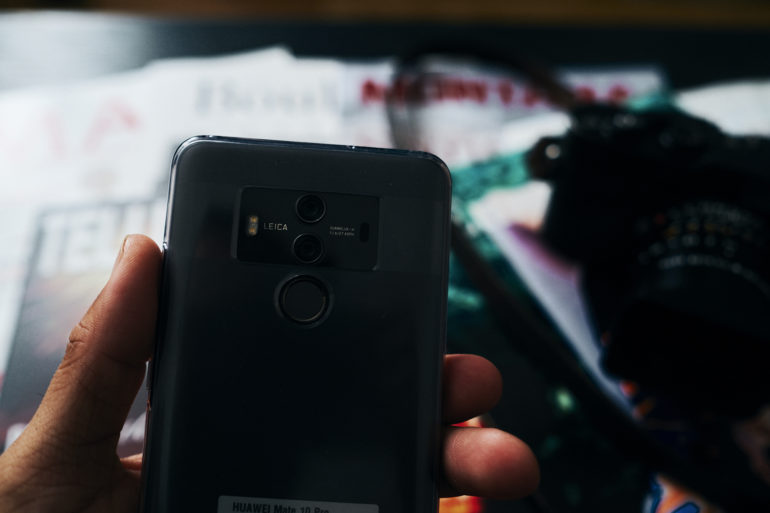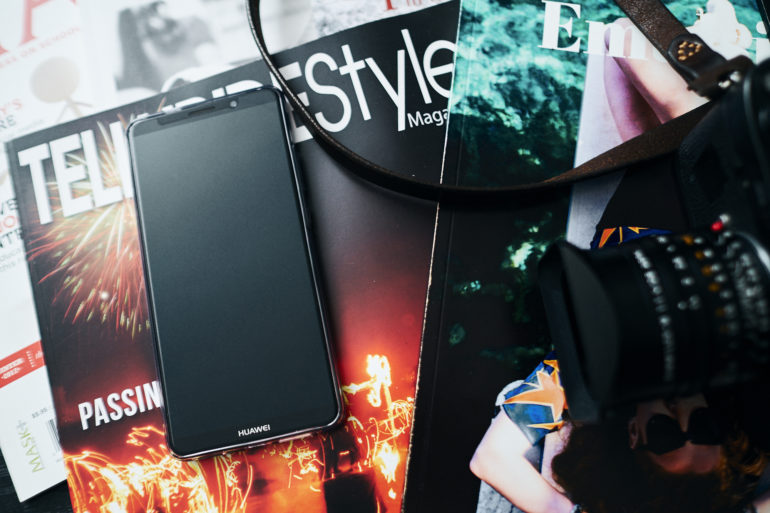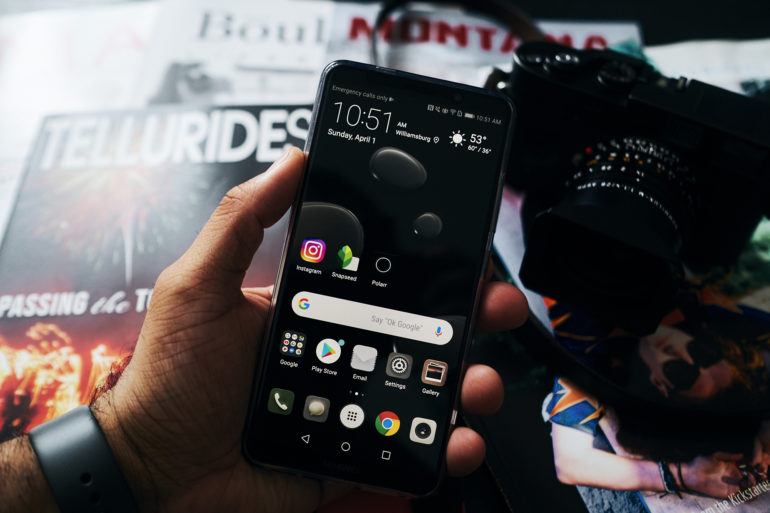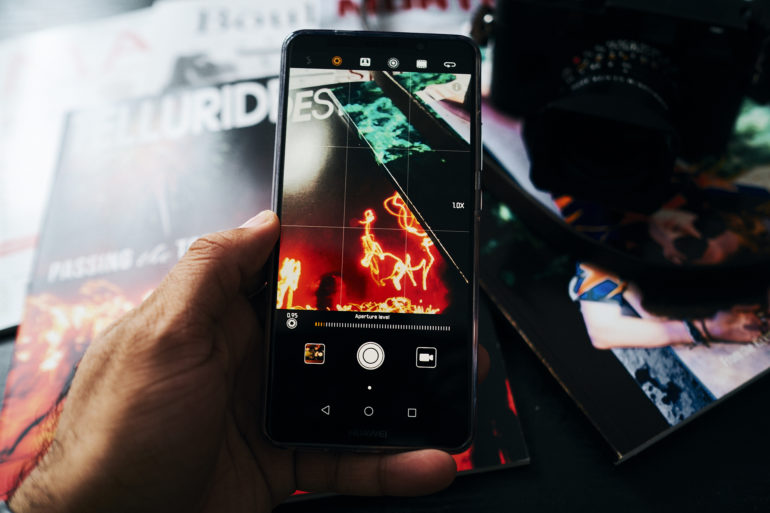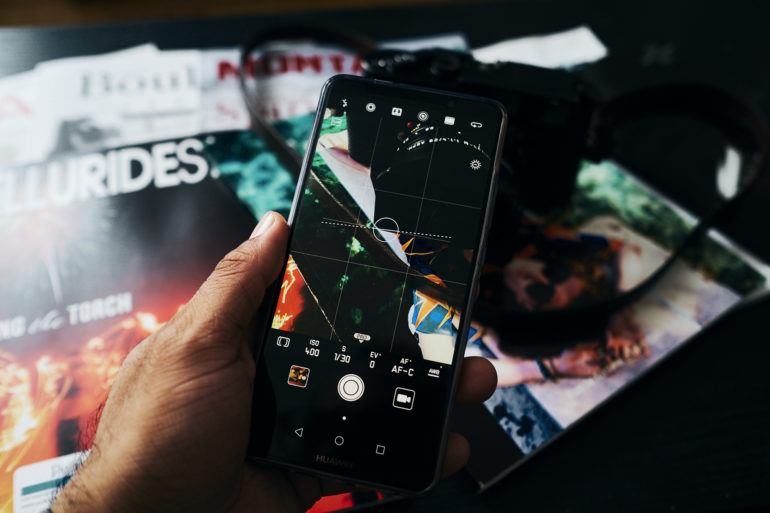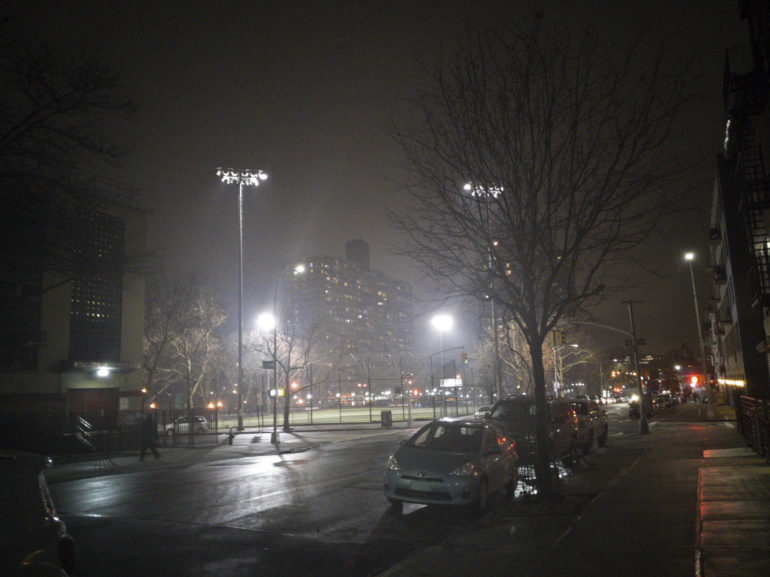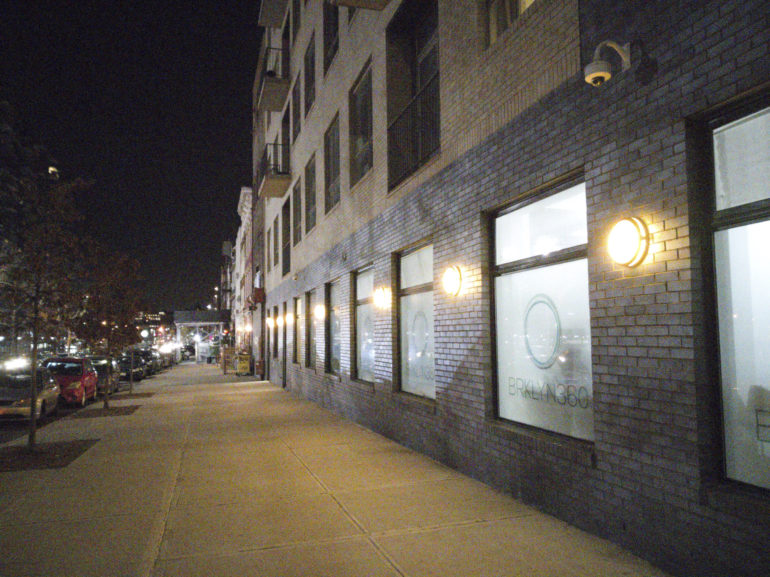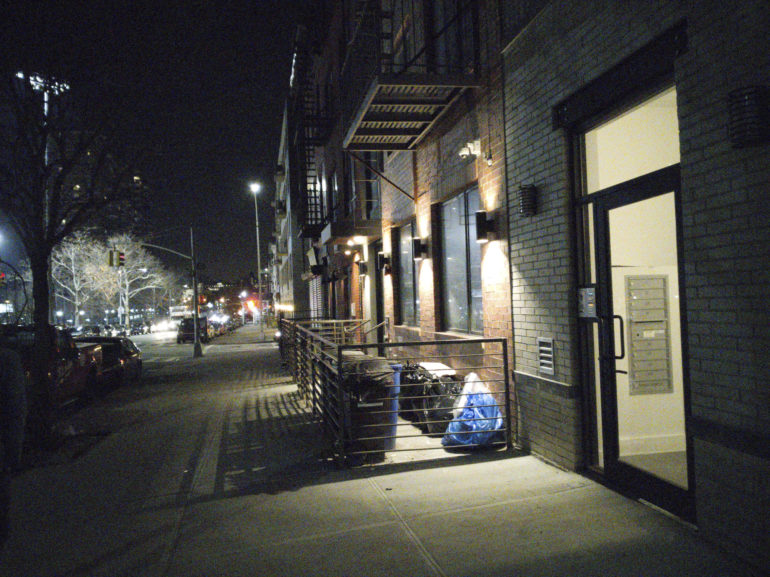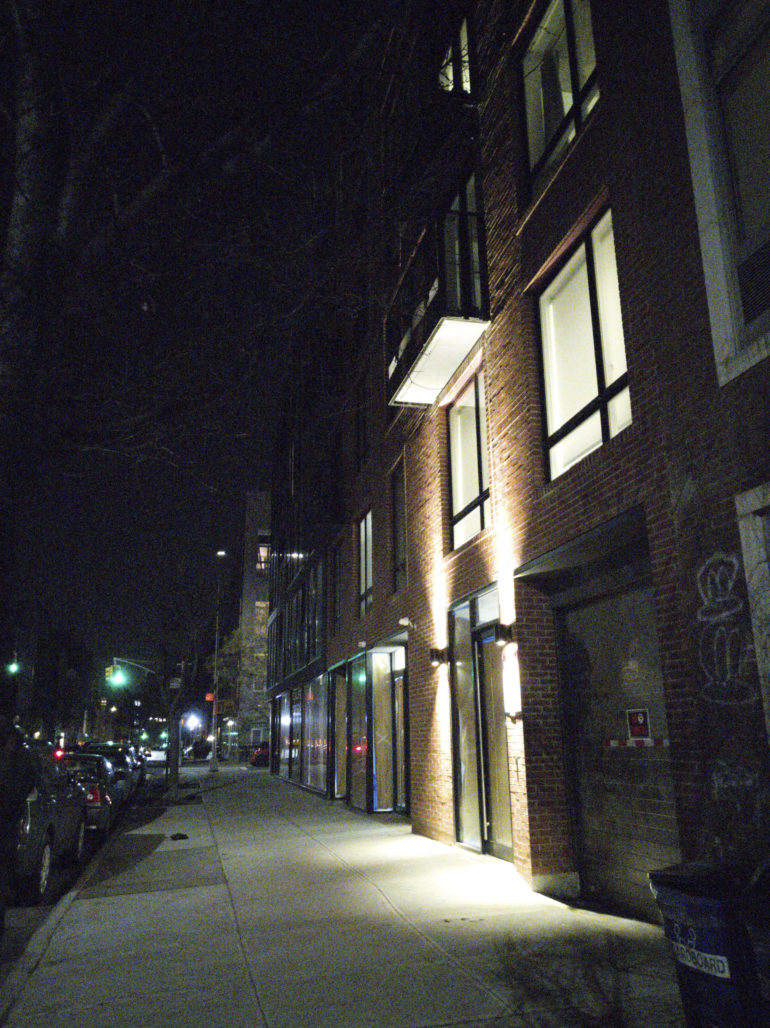Last Updated on 04/08/2018 by Mark Beckenbach
The Huawei Mate 10 Pro is a nice phone; but still not enough to move me away from iOS
When the Huawei Mate 10 Pro was announced, I saw it as just another good phone from Huawei–but what I didn’t know is just how much more I’d really like the camera vs the iPhone’s. I’m an Apple iPhone 8 Plus user and I’ve been an Apple smartphone user for around four or so years. I was originally an Android user, and with the Huawei Mate 10 Pro I experienced some of the first wonderlust that I had when I moved to Android from a regular flip phone years ago.
Pros and Cons
Pros
- Nice ergonomics once the case is on
- Feels like a nice size
- Fast
- Beautiful screen
- The camera is the best I’ve seen in a long time on a phone
- When you pull the images into an editor on a computer, it actually shows the lens to be an f0.95 lens even though this is an f1.6 lens camera
Cons
- Not so handy ergonomics without a case
- Weird thing with the out of focus areas
- Applies a whole lot of detail loss when nerfing noise
- RAWs at high ISOs totally remind you that this is still a smartphone.
Tech Specs
Much lengthier tech specs can be found on Huawei’s website. But here are the camera specs.
Main Camera
20 MP Monochrome + 12 MP RGB, f1.6
OIS (Optical image stablisation)
BSI CMOS
Dual-LED flash
PDAF + CAF + Laser + Depth Auto Focus
2x Hybrid Zoom
4K Video Recording
Front Camera
8 MP FF, f2.0
Ergonomics
The Huawei Mate 10 Pro has a front screen that is purely just that. There are no buttons at all and to activate the phone you just have to pick it up. It will sense this and boot up the screen.
On the bottom of the Huawei Mate 10 Pro you’ve got the speaker, a sensor of some sort (or a microphone) and the port. There is no headphone jack.
Move to the top, and you’ll spot another sensor. That’s all that there is to it.
Step to the side with the Huawei Mate 10 Pro and you’ll spot the volume buttons and the on/off switch.
Turn to the back and what you’ll spot here is the camera and the fingerprint reader. Overtime, I’ve come to sort of like this position more than Apple’s. However, it has also made me conscious of how I grab my phone. With Apple’s though, the ergonomics just make sense as I grab the phone. I’m going to swipe with my thumb anyway.
Build Quality
In the hand, the Huawei Mate 10 Pro feels really nice once you put a case on it. Without one, it just feels odd, slips out of your hand, and will fall onto the ground. While that happens, you’ll realize that the sides are pretty sharp partially due to the design of the screen which curves around a bit. Not even my iPhone 8 Plus with all its gloss and glitz does this. So if you’re going to use the Huawei Mate 10 Pro I’d say it’s pretty imperative that you get a case lest you want those bokelicious photos of your cat being ruined by a potentially cracked screen. Overall though, I’ve taken it in the rain with no problems due to the water resistance. So if your friend happens to be really drunk, you shouldn’t really worry about them spilling their drink on the phone moreso than you may worry about potentially smelling like some awful beer when you get home.
Ease of Use
The Huawei Mate 10 Pro uses a customized version of Android, but it doesn’t seem all that different from Vanilla Android. Everything can be found in pretty much the exact same spot and the version that I’ve had for review didn’t seem to have any sort of manufacturer bloatware on it. If you’re coming from iOS though, then this is going to take some getting used to. Most readers view this website it on iPhones, and so there will surely be some oddities like swiping from the top down to access certain settings vs swiping from the bottom up.
Admittedly, I was really just testing this phone out for the camera and I didn’t have a SIM card that I could use. So I can’t comment on the call quality.
Where I found the Huawei Mate 10 Pro really awesome to use is when using the rear camera: which has two different cameras integrated into it. Huawei has some filter modes built in but if you swipe up, you can access what they’re calling the Pro camera. This gives you control over the white balance, shutter speed, focusing, ISO, etc. If you want more bokeh, then you have to do all this and access the aperture settings. Granted, all of those are simulated still.
Image Quality
One of the really good things about the Huawei Mate 10 Pro is the camera. It’s a collaboration with Leica and has two different cameras built in. The front camera is, well, a front camera. For what it’s worth, it made me look a heck of a lot whiter than I actually am and it’s also very wide without adding a lot of distortion. Kudos to Huawei Mate 10 Pro on giving the front camera a wide angle for group selfies vs putting an emphasis on the sad, lonely, selfie. But goddamn do I hate the fact that it is white washing the hell out of my skin. I’ve worked 31 years to get this shade of brown and not even allowing me to alter the settings before I take the photo is also pretty unacceptable.
That’s all that I’m going to say about the front camera because quite honestly, I didn’t spend a lot of time with it simply because I hate front cameras. The rear camera unit is where all the magic happens. There is an f1.6 lens on both cameras but with the aperture control mode, you can get the aperture to simulate an effect of f0.95. And as you’ll see, sometimes it’s pretty good and at other times it’s pretty awful.
A Really Fast Lens

The Huawei Mate 10 Pro has two cameras on the rear: one is a 20MP Monochrome camera for that Leica sauce you all want in your images and the other is a 12MP RGB camera. With just regular photography, you probably wouldn’t be able to tell the difference between the images here and from an iPhone if you saw them both on a screen sized down or on Instagram. I’m going to be completely honest about that and when you upload to the web, your service is bound to compress the images to hell. But when you get to look at the images on a computer or something, you’ll see that the image quality is really quite good for a phone. If you’re used to working with dedicated cameras, then you’ll probably laugh at the results.
This segment of the review is honing in on the fact that Huawei went really far with their bokeh abilities. The Huawei Mate 10 Pro lets you create bokeh from anywhere and in some ways obeys the laws of physics that make sense. In other ways, it’s just odd. Plus it does a whole lot of odd things at times. For example, it will create this really weird edge around where the focus falloff is supposed to occur and it will make some appendages look oddly like they’re broken.
In addition to that, it will do some weird compression of people that makes no sense.




RAW File Versatility

The Huawei Mate 10 Pro shoots RAW images. On the phone, I tested the images in Snapseed and I also tested them in Capture One and Lightroom. It’s quite evident that while this isn’t terrible, Huawei is surely still making a phone and the sensor doesn’t have the capabilities that today’s modern ILC cameras have or even some of the higher end point and shoots like a Fujifilm X100F. Don’t expect a whole lot here and even at higher ISO settings, the results aren’t that spectacular.
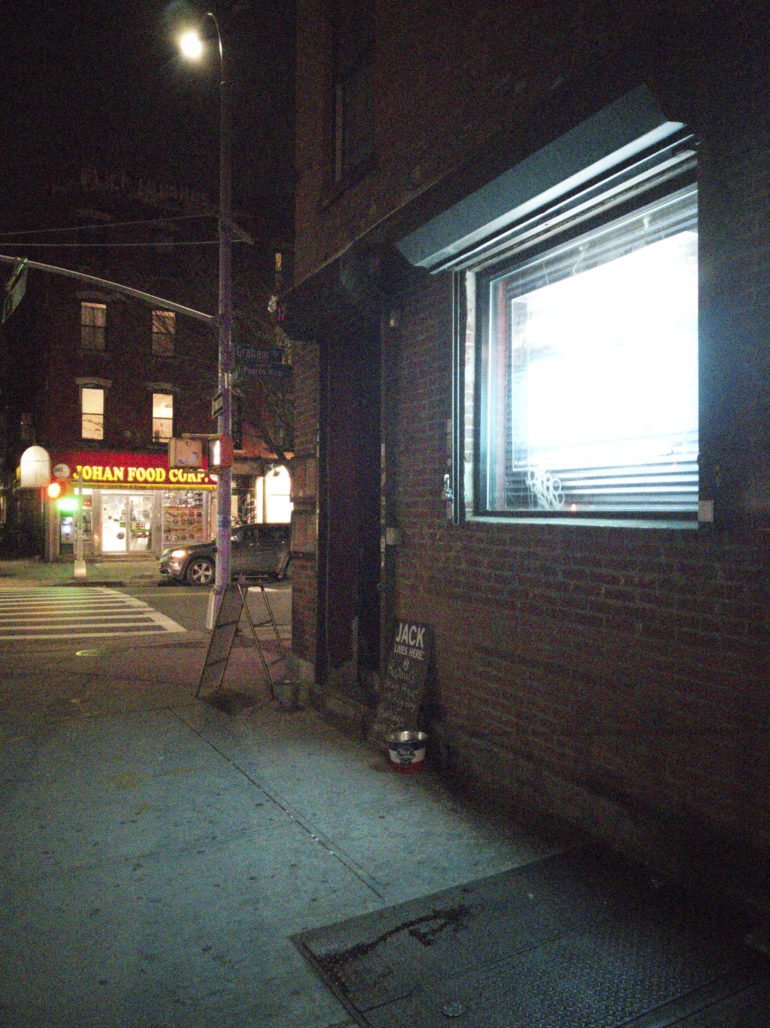
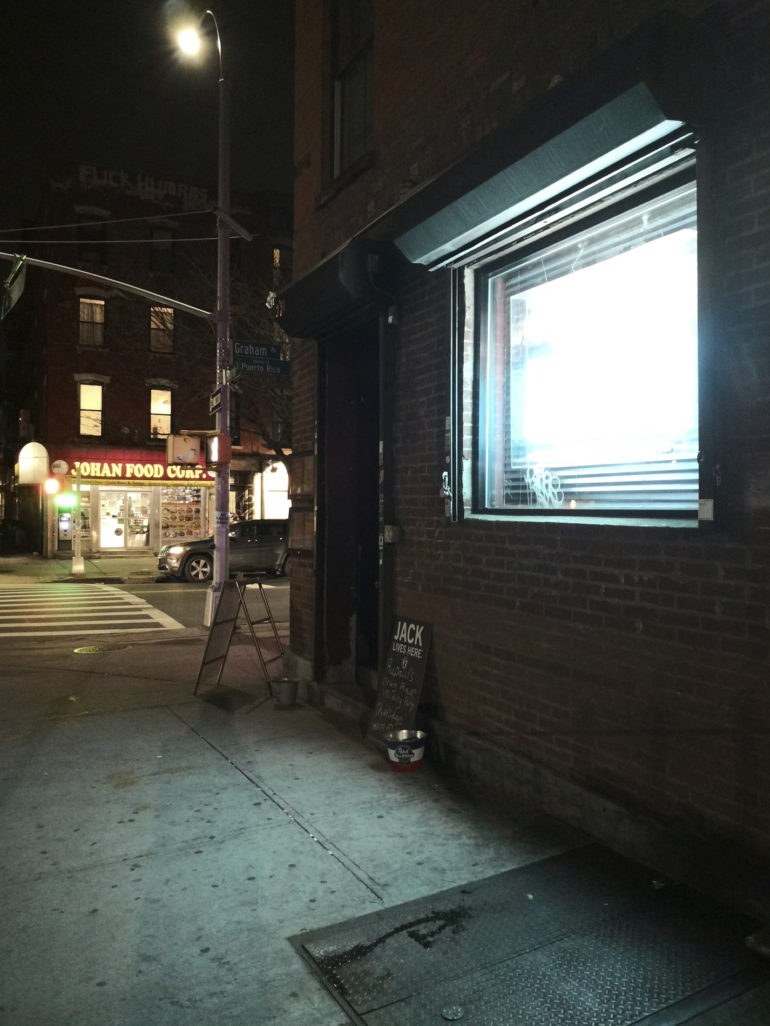
Extra Image Samples
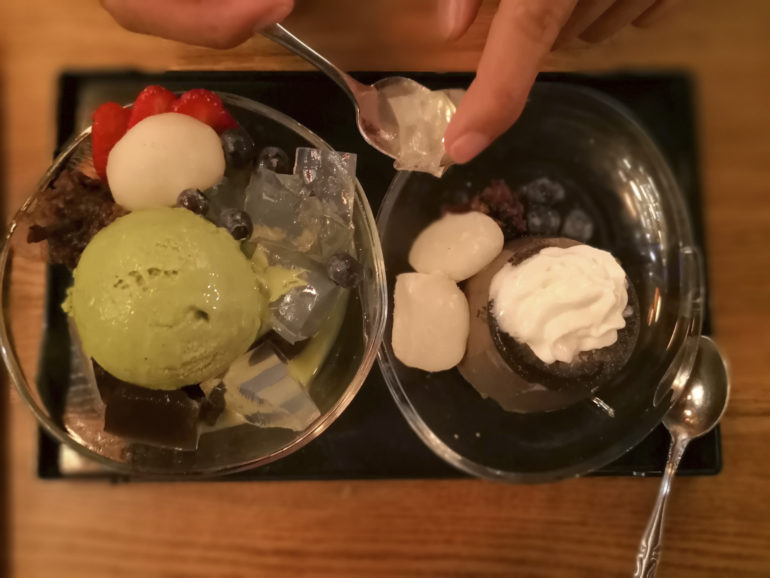







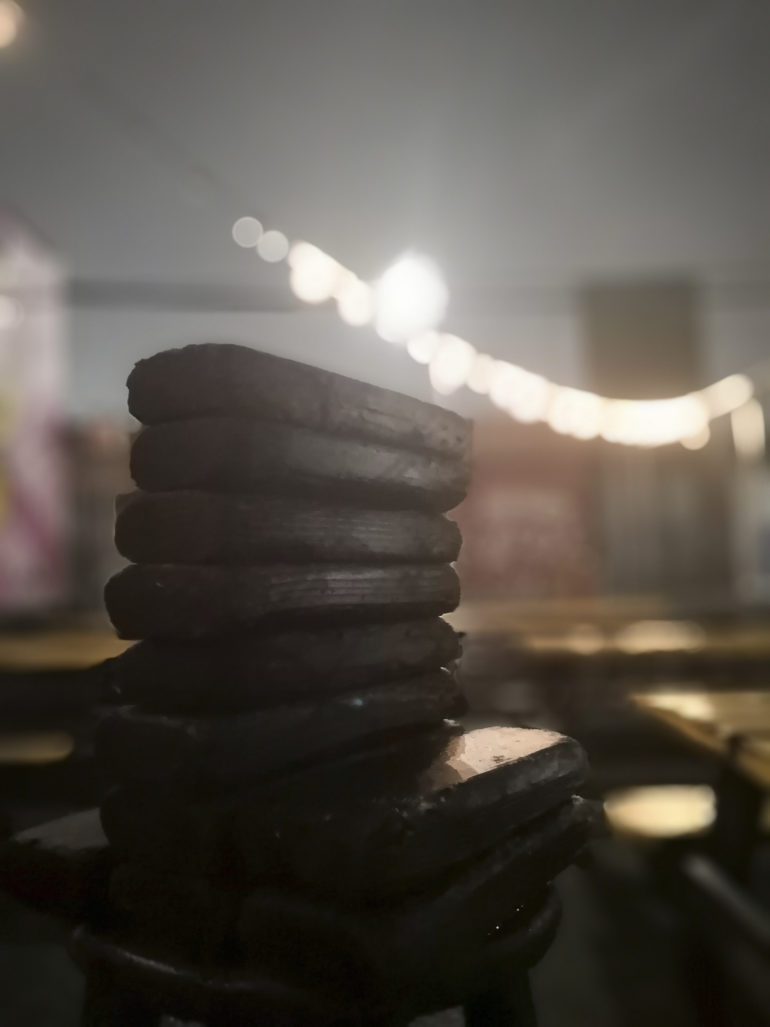


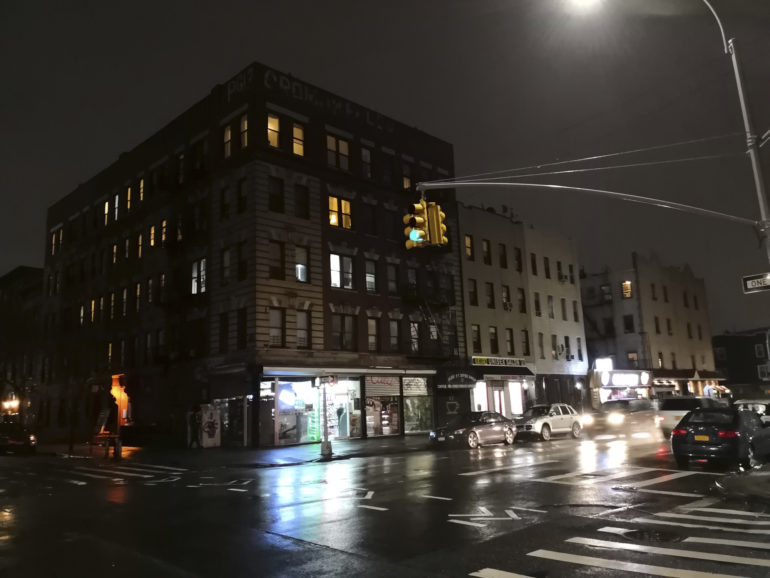
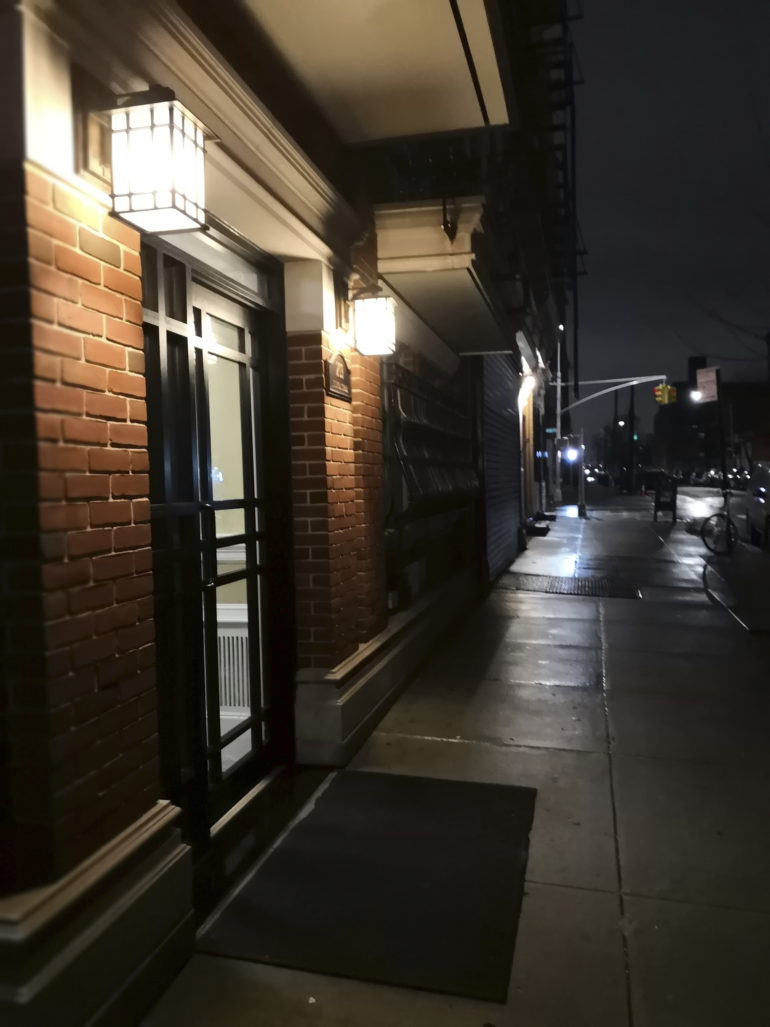



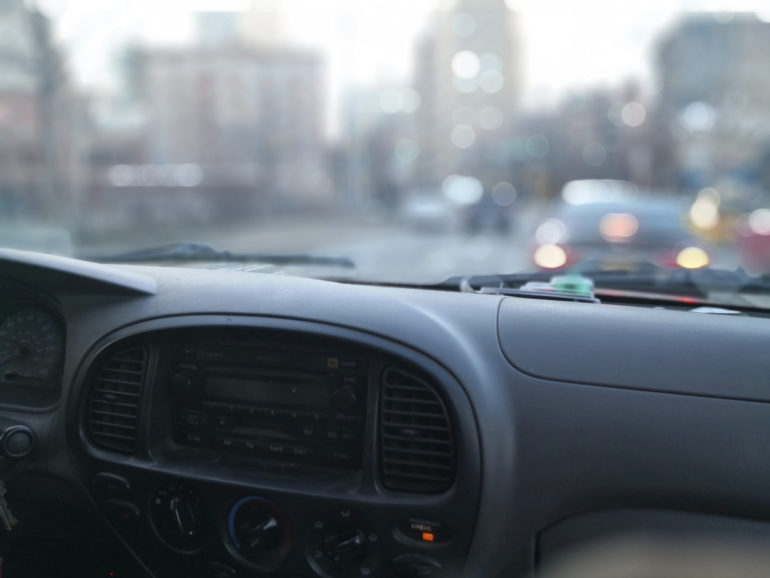
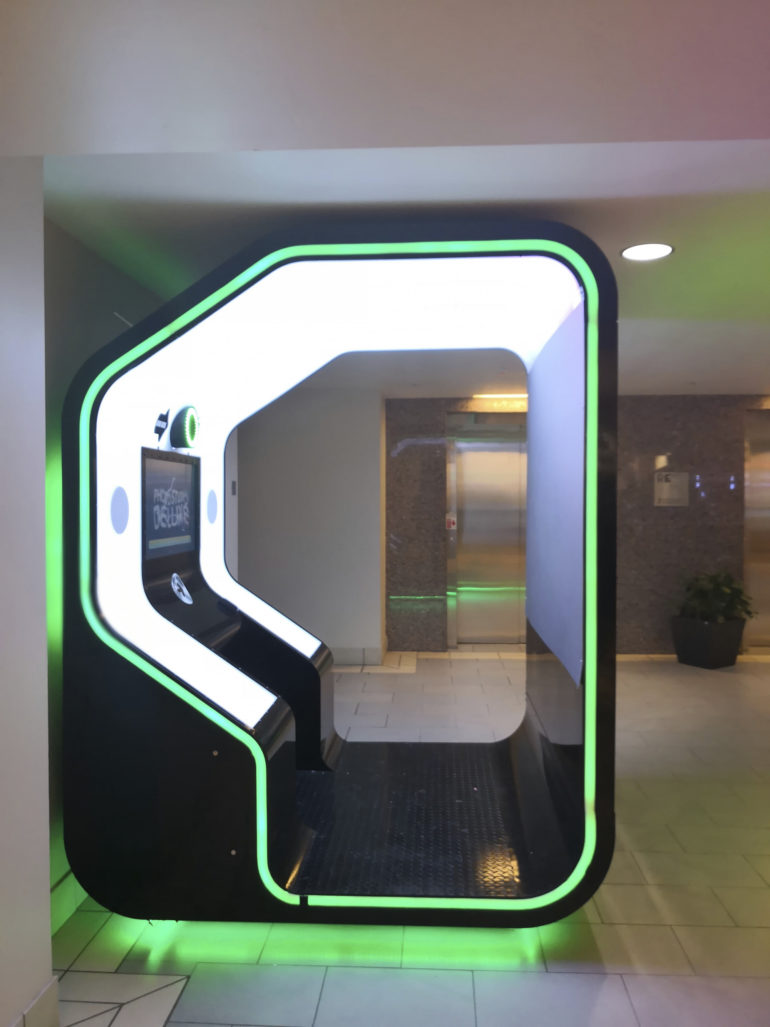
Conclusions
I think the Huawei Mate 10 Pro is a nice phone. It’s doing some things that Apple should be scared of. But at the time same time, I think that it’s still just a phone. As their camera technology becomes better, so too do actual cameras. The more smoke and mirrors that phone companies throw over the camera companies, the more that folks like Canon, Nikon, Sony and Fujifilm will need to do to remind people of just how much better dedicated optics and sensors really are.


